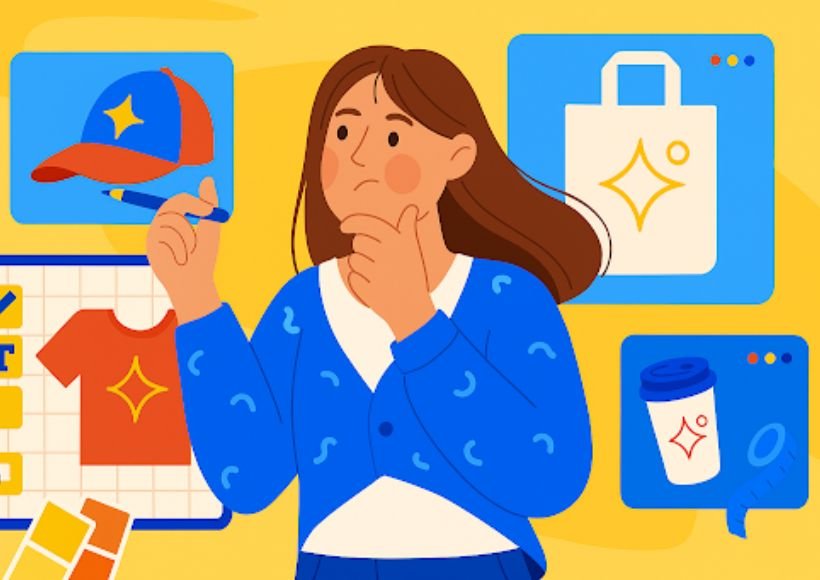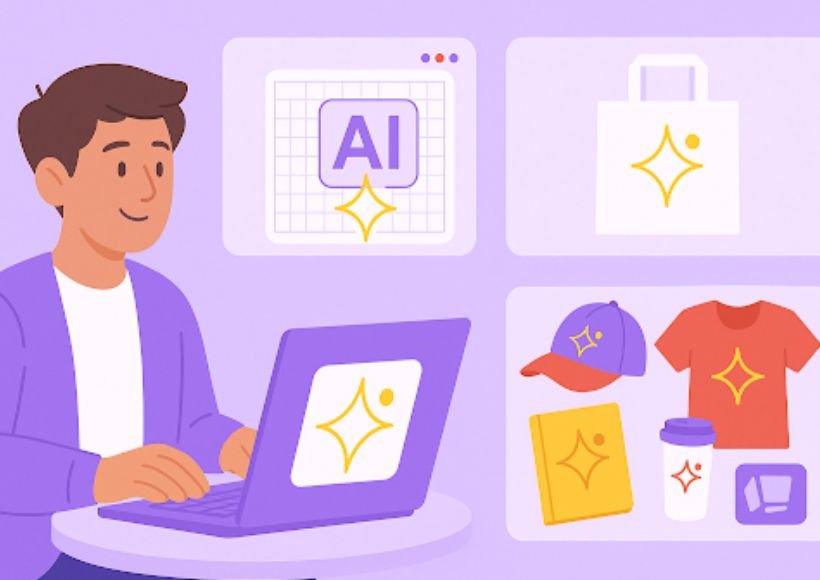Building a Brand with AI: Can Algorithms Replace Creative Teams?

Branding has always been a blend of strategy and creativity — a process once reserved for agencies, design teams, and marketing specialists. But today, AI tools can generate logos, suggest tone of voice, build color palettes, and even propose full brand kits in seconds. That leads to an inevitable question: Can algorithms replace creative teams?
For entrepreneurs, developers, and tech-savvy founders, this question isn’t theoretical. It’s practical — about time, cost, and quality. This article dives into how AI-powered branding works, what it can (and can’t) do, and how to leverage it without losing the creative soul of your brand.
Table of Contents
How AI Is Changing the Branding Process
AI in branding doesn’t just automate design — it simulates the decision-making process of designers and strategists. These tools are powered by AI logo generation systems, machine learning algorithms, and large datasets that enable brands to craft visual identities with precision and adaptability.
- Machine Learning: Trained on thousands of design examples, branding styles, and market patterns.
- Natural Language Processing (NLP): To understand brand tone, values, and audience from simple inputs.
- Generative Design Models: To create logos, layouts, typography, and messaging on the fly.
Instead of commissioning weeks of work, users input a few prompts (like a brand name, industry, and style preferences), and receive fully-formed brand assets in minutes.
But does speed mean quality? Let’s explore.
Step-by-Step: How to Build a Brand Using AI

Even without a design background, you can use AI tools to create a cohesive brand identity. Here’s how.
Step 1: Clarify Your Brand Strategy
Before opening any AI tool, define:
- What your business does
- Who your target audience is
- What values and emotions your brand should convey
- Your tone of voice (friendly, formal, innovative, etc.)
Example: A fintech app for Gen Z users might aim for a personality that feels modern, secure, and slightly playful. That sets the foundation for visuals and messaging.
Step 2: Use an AI Branding Platform
Input the following:
- Brand name and tagline
- Industry category
- Visual preferences (minimalist, bold, elegant, etc.)
- Color and font preferences
- Tone and voice selection
The platform then analyzes your choices using NLP and trained design models.
Step 3: Generate Brand Assets
Based on your data, the AI tool can produce:
- Logo concepts
- Color palette and typography pairings
- Iconography and layout structures
- Tagline or brand mission suggestions
- Mockups (business cards, social media profiles)
Many platforms include editable previews, so you can tweak design elements directly.
Step 4: Download and Launch
Once you finalize your brand look, you can export:
- Vector logo files (SVG, PDF)
- Web-friendly assets (PNG with transparent background)
- Style guides (for internal or external use)
- Social media templates
You now have the basic visual identity and tone ready for launch — without hiring a team.
Tools and Resources for AI-Driven Branding
| Tool Type | Purpose | Best For |
| AI Logo Generators | Create unique logos based on user input | Startups, MVPs, personal brands |
| Messaging Generators | Propose brand taglines, values, and mission | Content-light early-stage businesses |
| Color Palette Creators | Suggest strategic color combinations | Designers, marketers, founders |
| Brand Kit Builders | Export visual identity packages in minutes | Solo entrepreneurs, freelancers |
Bonus Tip: Use AI mockup tools to preview your brand on packaging, signage, or websites before going live.
Can Algorithms Replace Creative Teams? A Side-by-Side Comparison
| Feature | AI Branding Tools | Creative Teams / Agencies |
| Speed | Instant to minutes | Weeks to months |
| Cost | Low to free | Medium to high |
| Scalability | High — great for fast pivots or experiments | Medium — requires planning and resources |
| Creativity & Storytelling | Limited (based on training data) | High — customized nuance and deep brand narrative |
| Strategic Insight | Basic — infers from prompts | Deep — based on research and workshops |
| Visual Uniqueness | Moderate (risk of shared elements) | High — crafted from scratch |
Conclusion: AI is powerful, but it doesn’t replace human creativity — it augments it. For foundational branding, fast iterations, and lean projects, AI is excellent. For emotionally rich, multi-platform storytelling, human insight still leads.
Practical Advice: When to Use AI and When to Hire Creatives
Use AI If You:
- Are launching an MVP or internal tool
- Need a logo and visual identity quickly
- Have limited budget or no access to designers
- Want to test multiple branding directions
- Are validating a concept before investing further
Hire a Creative Team If You:
- Are rebranding a growing or public-facing company
- Need deep storytelling and emotional resonance
- Require custom illustrations or complex visuals
- Are preparing for investment, PR, or global rollout
- Need a full brand system across platforms
Tips and Pitfalls for Using AI Branding Tools
Tips
- Start with strategy. AI reflects what you input. Be intentional about tone, personality, and audience.
- Customize the output. Don’t just download the first option — tweak fonts, colors, and layouts to make it your own.
- Use it to brainstorm. Even if you plan to work with a designer later, AI can provide a great starting point.
- Test in real-world contexts. See how your branding looks on phones, websites, packaging, or social media.
Common Pitfalls
- Assuming AI = originality. Many platforms rely on similar templates. Without editing, your brand may look like someone else’s.
- Ignoring licensing. Not all free downloads come with commercial use rights. Always check usage terms.
- Skipping long-term strategy. AI won’t build your brand’s future. That’s still your job.
- Using trendy visuals without meaning. Just because something looks modern doesn’t mean it fits your values.
FAQ
Can I use AI to build a complete brand?
You can create a visual identity and basic messaging, but AI won’t replace full brand strategy, customer journey planning, or long-term storytelling.
Is AI-generated branding legal to use?
Usually yes — if the platform grants commercial use rights. Check for any restrictions before using assets publicly.
What industries benefit most from AI branding?
AI branding works best for startups, solopreneurs, e-commerce stores, content creators, and tech prototypes — especially in early stages.
Conclusion
AI branding tools are changing how we build brands — making the process faster, more accessible, and surprisingly smart. While they won’t replace creative teams for complex brand systems, they’re a powerful alternative for early-stage projects, experimentation, or budget-conscious founders.
In the right hands, AI can accelerate creativity, spark ideas, and help you launch with confidence. The secret is knowing when to use it — and when to go deeper with human expertise
